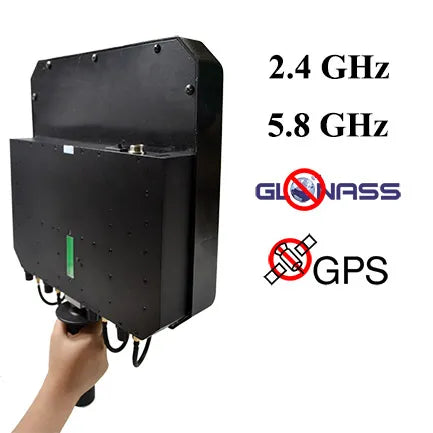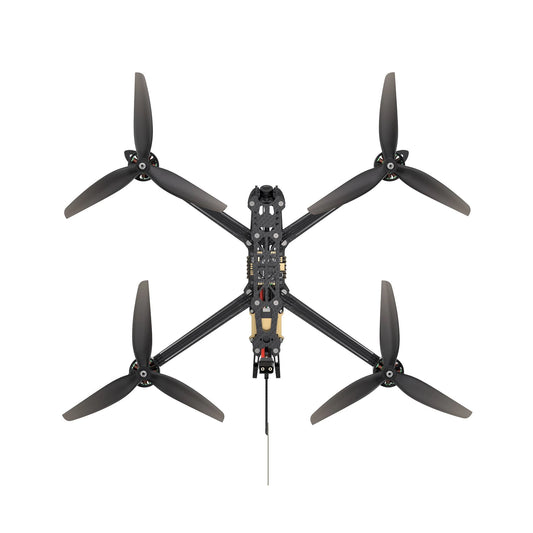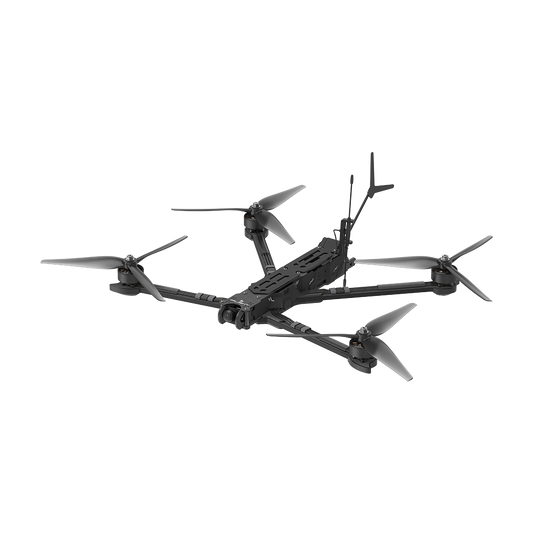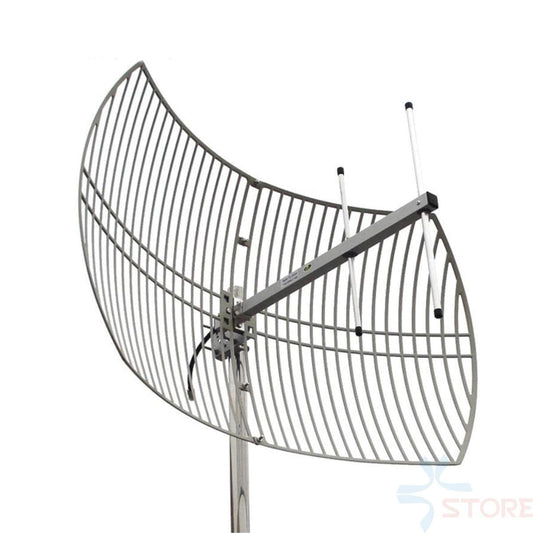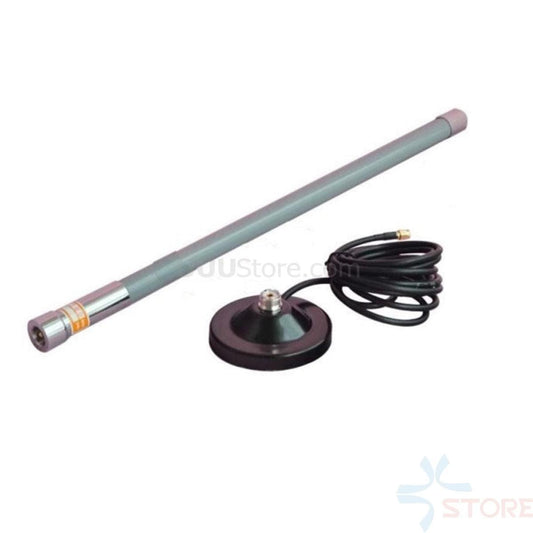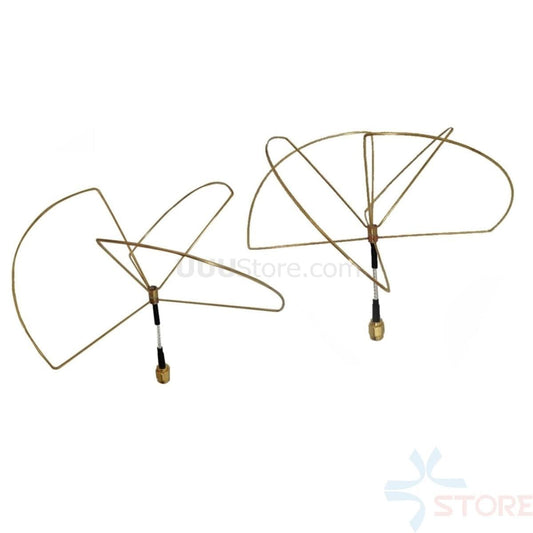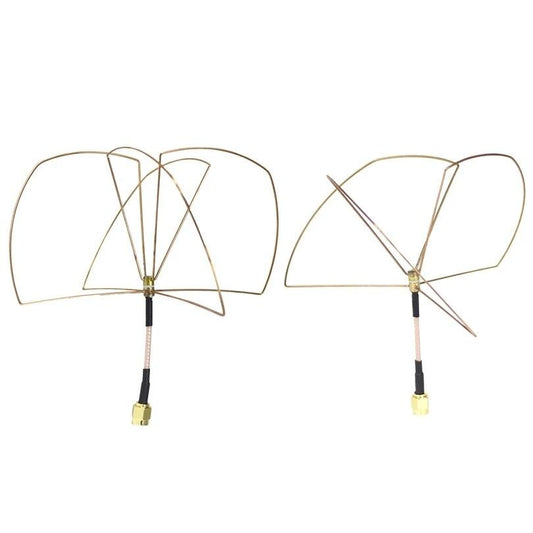-
24W Handheld Anti Drone System - 250 Meters 1.2G 1.6G 2.4G 5.8G Glonass GPS D4 Handheld Portable Drone Signal Anti Drone Device
Regular price $4,469.00 USDRegular priceUnit price per -
10W - 30W Handheld Anti Drone Device - 1KM Counter Range 5 channel 900MHZ 1.2G 1.6G 2.4G 5.8G Unmanned Aerial Vehicle Anti Blockers Anti Drone Device
Regular price $3,249.00 USDRegular priceUnit price per -
T-MOTOR C80A 5-12S BLHeli 32 CINE Series ESC 31.2g Weight
Regular price $161.99 USDRegular priceUnit price per -
GEPRC MARK4 LR8 1.2G 1.6W FPV - EM2810 KV1280 8inch GEP-BLS60A-4IN1 ESC RC Quadcopter LongRange Freestyle Drone Rc Airplane
Regular price From $279.27 USDRegular priceUnit price per -
iFlight Chimera9 ECO 6S BNF 9inch Long Range FPV Drone - Can Load 2.2KG, BLITZ ATF435 FC E55S ESC XING-E 2809 Motors 405mm Wheelbase 1.2G/5.8G VTX TBS/ELRS RX
Regular price From $399.00 USDRegular priceUnit price per -
1.2G 15dBi High Gain Directional Parabolic Grid Antenna For Video Transmission FPV RC Airplane
Regular price $371.03 USDRegular priceUnit price per -
1.2G Antenna 16DB Long 45cm Strong magnetic big sucker fiber glass Antenna with 3M SMA Male cable
Regular price $73.86 USDRegular priceUnit price per -
Arkbird High Gain Directional Panel 1.2g 1.3g 1.2GHz 1.3GHz FPV Cross Antenna-10 DB for 1.2g transmitter and receiver long range
Regular price $75.49 USDRegular priceUnit price per -
1.2G 3 4 Blades RP-SMA Clover Leaf Antenna Skew Planar for 1.2Ghz Audio Video FPV TX RX
Regular price $29.34 USDRegular priceUnit price per -
ShenStar 1.2GHz Clover Leaf Antenna 3 /4 Leaves Circular Polarized SMA male for FPV Racing Drone 1.2G Video Transmitter Receiver
Regular price From $14.69 USDRegular priceUnit price per -
1.2GHz and 1.3GHz 8dBi FPV Flat Patch Panel Antenna Sma Male Plug for RC airplane
Regular price $42.00 USDRegular priceUnit price per -
1.2G 3DBi Omnidirectional Antenna SMA Male for Wireless Audio/Video Tranmitter Receiver LawMate FPV
Regular price From $10.07 USDRegular priceUnit price per -
1.2G 200mW Transmitter - Wireless 8CH Audio Video FPV Transmitter With 12CH FPV Receiver Combo For RC FPV Racing Drone Models
Regular price From $24.91 USDRegular priceUnit price per -
TX1000 Transmitter - 1.2G 1W 1000mW 8CH FPV Transmitter 1.2g TX 12CH Receiver RX FPV Combo Up to 3km for RC Models Drone Quad long range system
Regular price From $42.27 USDRegular priceUnit price per -
1.2G 8CH 700mW AV Analogue Siginal Transmission FPV System Transmitter Receiver Combo With Antenna For RC FPV Airplane
Regular price From $31.41 USDRegular priceUnit price per -
FPV 1.2g 1.2ghz 800mw Digital wireless AV Video/Audio Diagram Transmitter and Receiver combo for Rc ZMR250 QAV280 QAV250 Drone
Regular price From $42.95 USDRegular priceUnit price per -
1.2Ghz 5000mW Transmitter - 1.2g 5W Wireless AV Video Audio Transmitter with 1.2G Receiver High Gain Antenna long range transmitter
Regular price $121.88 USDRegular priceUnit price per -
FPV 1.2GHZ 1.2g 400mw 8CH Wireless Audio&Video transmitter and 12CH receiver FOR FPV video sender and ZMR250 QAV280 drone
Regular price $79.42 USDRegular priceUnit price per -
1.2G Long Range System FPV Video Transmitter - 1.2Ghz 1000mW 4CH Wireless Micro Tx only 46g for FPV Drone
Regular price $106.52 USDRegular priceUnit price per
